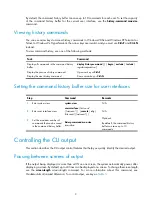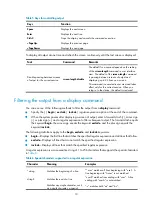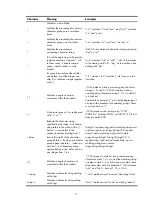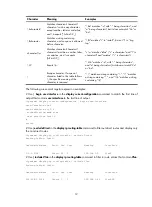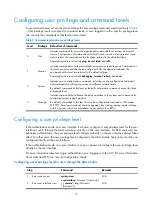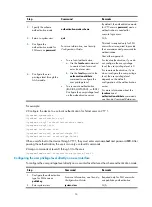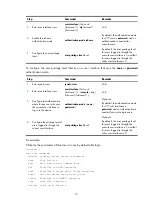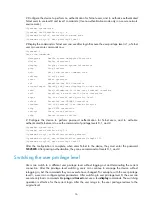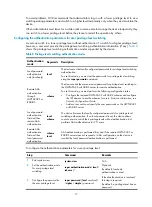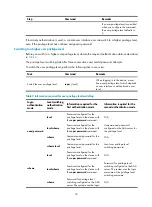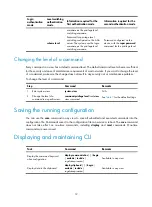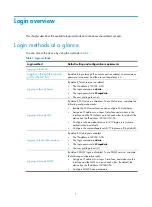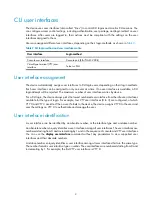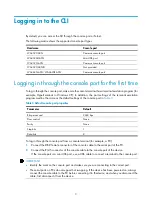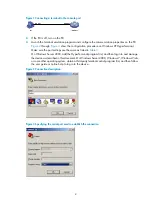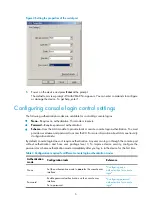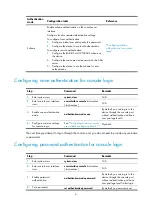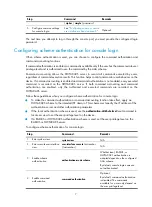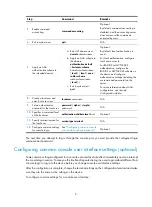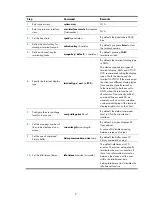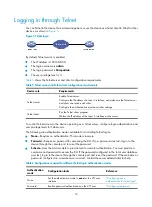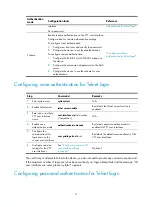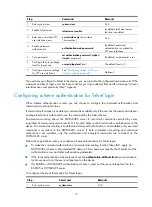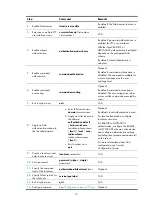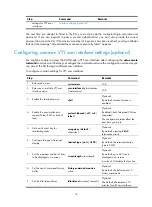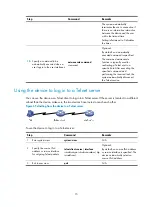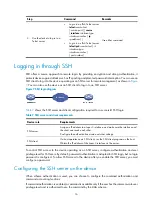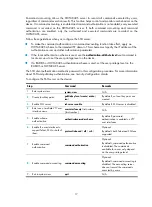
2
CLI user interfaces
The device uses user interfaces (also called "lines") to control CLI logins and monitor CLI sessions. You
can configure access control settings, including authentication, user privilege, and login redirect on user
interfaces. After users are logged in, their actions must be compliant with the settings on the user
interfaces assigned to them.
Users are assigned different user interfaces, depending on their login methods, as shown in
Table 2
CLI login method and user interface matrix
User interface
Login method
Console user interface
Console port (EIA/TIA-232 DCE)
Virtual type terminal (VTY) user
interface
Telnet or SSH
User interface assignment
The device automatically assigns user interfaces to CLI login users, depending on their login methods.
Each user interface can be assigned to only one user at a time. If no user interface is available, a CLI
login attempt will be rejected. The maximum number of user interfaces varies by device.
For a CLI login, the device always picks the lowest numbered user interface from the idle user interfaces
available for the type of login. For example, four VTY user interfaces (0 to 3) are configured, of which
VTY 0 and VTY 3 are idle. When a user Telnets to the device, the device assigns VTY 0 to the user and
uses the settings on VTY 0 to authenticate and manage the user.
User interface identification
A user interface can be identified by an absolute number, or the interface type and a relative number.
An absolute number uniquely identifies a user interface among all user interfaces. The user interfaces are
numbered starting from 0 and incrementing by 1 and in the sequence of console and VTY user interfaces.
You can use the
display user-interface
command without any parameters to view supported user
interfaces and their absolute numbers.
A relative number uniquely identifies a user interface among all user interfaces that are the same type.
The number format is
user interface type + number. The user interfaces are numbered starting from 0 and
incrementing by 1. For example, the first VTY user interface is VTY 0.

